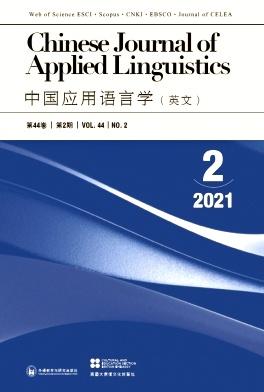Metadiscourse in MOOC Video Lectures: Comparison with University Lectures and Disciplinary Variation
IF 1.1
4区 教育学
Q3 EDUCATION & EDUCATIONAL RESEARCH
引用次数: 0
Abstract
Based on Hyland’s (2018) interpersonal model of metadiscourse, this study explores MOOC video lecturers’ use of metadiscourse and compares it to traditional university lecturers’. Disciplinary variation in metadiscourse in the MOOC video lectures has also been investigated. The MOOC corpus consists of sixteen MOOCs across three disciplinary areas, including Arts and Humanities, Engineering and Physical Sciences, and Social Sciences. The results suggest that despite slight differences, the most frequently appearing metadiscourse in the MOOC corpus resembles the patterns found in university lectures, which reveals the remarkable similarities in using metadiscourse between MOOCs and traditional face-to-face lectures. However, different instructional contexts and teacher-student relationships indeed contribute to the variance in the employment of metadiscourse. Overall, MOOC video lecturers employed more interactive metadiscourse but less interactional metadiscourse than university lecturers. Cross-disciplinarily, the use of metadiscourse in MOOC video lectures is considerably influenced by disciplinary features. MOOCs containing more discipline-specific content and requiring intensive cognitive effort tend to use more interactive metadiscourse and engagement markers; while for MOOCs that may include more perspectives than basic facts, boosters and attitude markers seem to be employed more frequently. Possible reasons and purposes of the differentiated use of metadiscourse across disciplines are discussed in detail.MOOC 视频讲座中的元话语:与大学讲座和学科差异的比较
基于Hyland(2018)的元话语人际关系模型,本研究探讨了MOOC视频讲师对元话语的使用,并将其与传统大学讲师的元话语进行了比较。本研究还调查了MOOC视频讲座中元话语的学科差异。MOOC 语料库由 16 个 MOOC 组成,涉及三个学科领域,包括艺术与人文科学、工程与物理科学以及社会科学。研究结果表明,尽管存在细微差别,但 MOOC 语料库中出现频率最高的元话语与大学讲座中的元话语模式相似,这揭示了 MOOC 与传统面对面讲座在使用元话语方面的显著相似性。然而,不同的教学情境和师生关系确实造成了元话语使用的差异。总体而言,与大学讲师相比,MOOC 视频讲师使用了更多的交互式元话语,但使用的交互式元话语较少。从跨学科角度看,元话语在 MOOC 视频讲座中的使用在很大程度上受到学科特点的影响。包含更多特定学科内容、需要密集认知努力的 MOOC 往往使用更多互动元话语和参与标记;而对于可能包含更多视角而非基本事实的 MOOC,似乎更频繁地使用助推器和态度标记。本文详细讨论了各学科元话语使用不同的可能原因和目的。
本文章由计算机程序翻译,如有差异,请以英文原文为准。
求助全文
约1分钟内获得全文
求助全文
来源期刊

Chinese Journal of Applied Linguistics
EDUCATION & EDUCATIONAL RESEARCH-
CiteScore
1.50
自引率
0.00%
发文量
377
期刊介绍:
The Chinese Journal of Applied Linguistics (CJAL) (formerly known as Teaching English in China – CELEA Journal) was created in 1978 as a newsletter by the British Council, Beijing. It is the affiliated journal of the China English Language Education Association (founded in 1981 and now the Chinese affiliate of AILA [International Association of Applied Linguistics]). The Chinese Journal of Applied Linguistics is the only English language teaching (ELT) journal in China that is published in English, serving as a window to Chinese reform on ELT for professionals in China and around the world. The journal is internationally focused, fully refereed, and its articles address a wide variety of topics in Chinese applied linguistics which include – but also reach beyond – the topics of language education and second language acquisition.
 求助内容:
求助内容: 应助结果提醒方式:
应助结果提醒方式:


